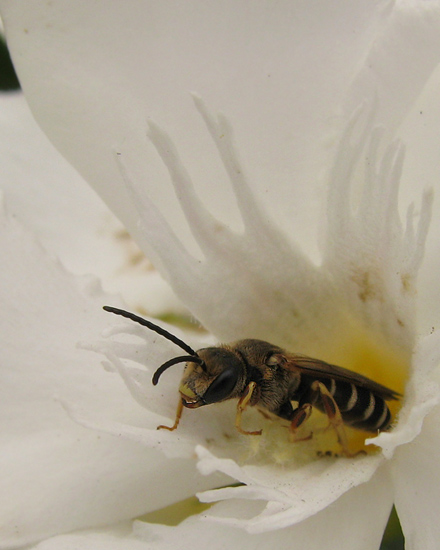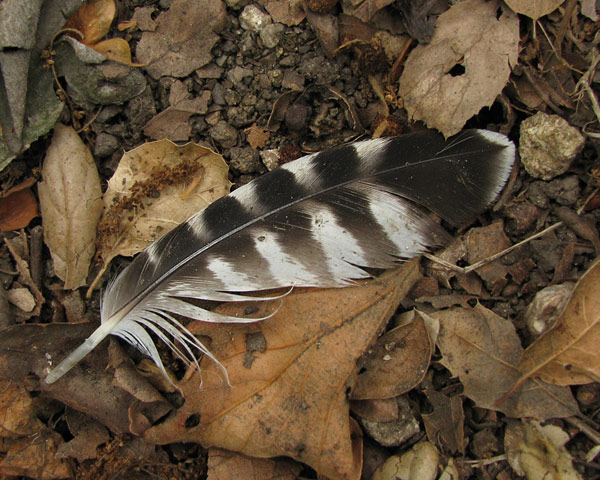After
hyping my fantastic walk on Wednesday, I promised I’d share it with you all today
(Thursday), but as I’m not getting to posting this
until midnight, no one will even read this until Friday!
*sigh*
Sorry, everybody. It was cloudy and cool again today and
(apparently) I have no will power when it comes to such
matters. Now I’m about two days behind on other
stuff that needed my attention. But, thinking over my
memories of the past two days’ walks, I can honestly
say I have no regrets! *GRIN*
And now, on to the good stuff…

In the summer months, I keep a few containers filled with
water outside our cabin. There are increasingly few water
sources for birds and mammals as the seasonal creek
shrinks and slows to a trickle in some spots.
In addition to several bird species (including a
Cooper’s Hawk!), I have also seen deer, fox, bobcat,
coyote, rabbit and squirrel availing themselves.
This Western Gray Squirrel (Sciurus griseus) was
busy getting a drink as I stepped outside for my walk. *Be
sure to click on the image for an amusing bonus shot.*
You lookin’ at me??!

In the active months of summer, it can be hard to get past
the front of my cabin withougt being distracted by some
new arthropod.
In this case, the wooden porch railing was hosting
something otherworldy!
This is the immature (nymph) stage of some leafhopper
(Family Cicadellidae) species. Up close, It’s very impressive
looking — with that spiked tail — but its actual size
is all of about 2 to 3 millimeters.

One of the best parts about cool weather in the summer
months is that many of these insects will slow down
considerably.
Looking for resting bees hanging out in the center of
flowers is one of my favorite pastimes.
I would have stayed longer taking more photographs of this
bee (no ID yet!) resting in a white Oleander bloom, but
one of my neighbors was apparently becoming quite
agitated…

Another gray squirrel had climbed high into the bare
branches of an olive tree, twitching its tail and loudly
alerting everything to my presence.
I tried to assure the squirrel that I was not even
remotely worth all the fuss.
But the yammering continued and I decided to peaceably
move along.

One of the increasingly few remaining California Poppies
still blooming this late in the season.
The eye-popping orange is even more startling amidst
the browning backdrop of our summer hillsides.

I stopped to photograph this sluggish Fence Lizard
(Sceloporus occidentalis longipes).
Every time the light shifted and became a little brighter,
I would glance skyward to see if the sun was finally going
to successfully break through the clouds. I held my
breath, hoping the cloud cover would hold.
I glanced down and realized that the lizard was looking up
too… I’m guessing it was eagerly awaiting that
very moment.
Sun is like coffee for lizards… their day gets
off to a slow start without it.

I turned to inspect a large patch of California Sagebrush
(Artemisia californica) and struck gold…
well, COPPER actually!
This female Tailed Copper (Lycaena arota) was
insanely cooperative and let me get close to take some
beautiful photos.
Then, she really outdid herself…

…and turned to show off the pretty pattern on the
top of her wings.
How do you say “thank you” in
butterfly?
*GRIN*
When I passed this same spot on the way home, I thought
she was still sitting there. But, it turned out
to be a male this time. Coincidence? Or was he also
waiting, just hoping that she would return?

A frustrating moment at the end of my very lovely
walk…
There on the ground among the brightly colored eucalyptus
leaves was more balloon garbage.
I wrote about my rather strong feelings on this subject in
this post from last May. Along with this item, I also picked up a latex glove
(ewww…) and several other random bits of
plastic.

I long for a world where we as a species create
significantly less waste. Where we are all concerned about
what happens to our trash as it infiltrates increasingly
remote natural environs.
~ May we all find more feathers than trash on the
trail. ~
This one belonged to an Acorn Woodpecker
(Melanerpes formicivorus), I think. Compare to
image
here.




























